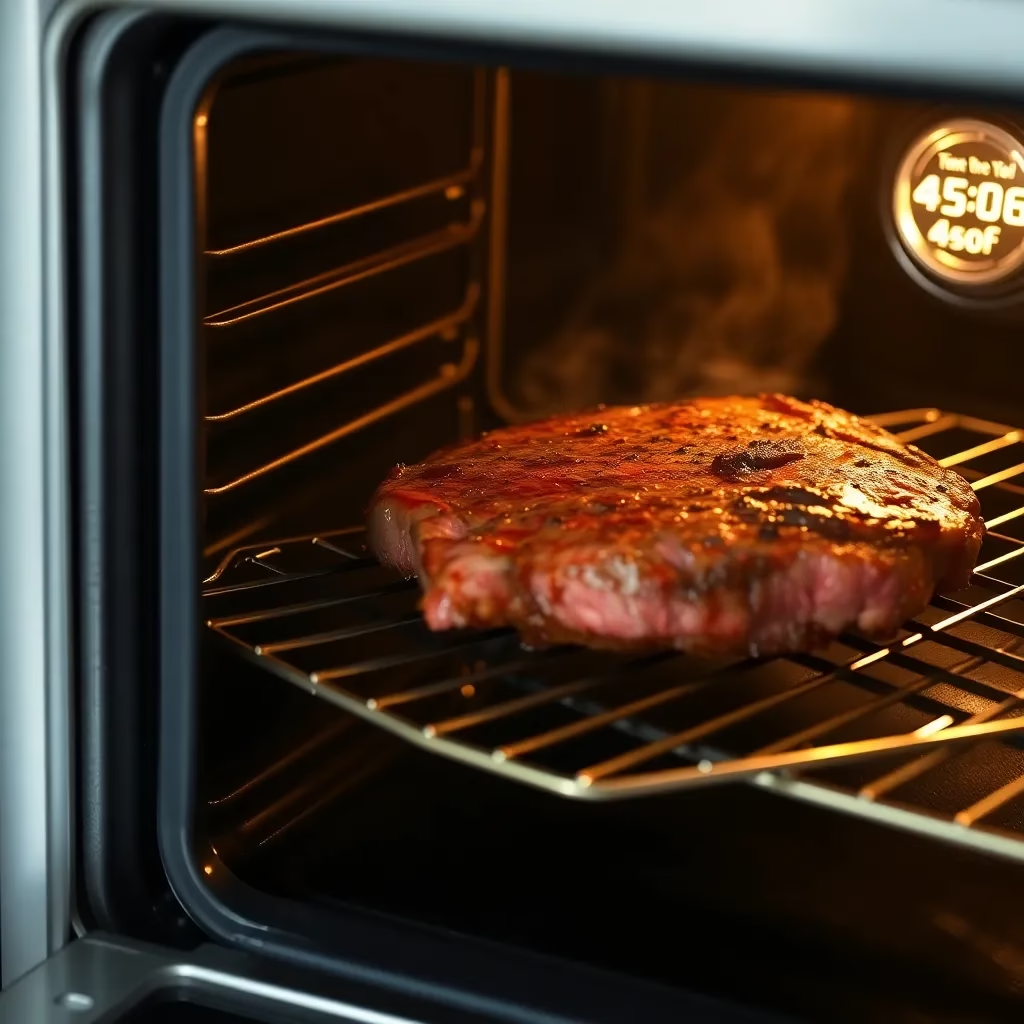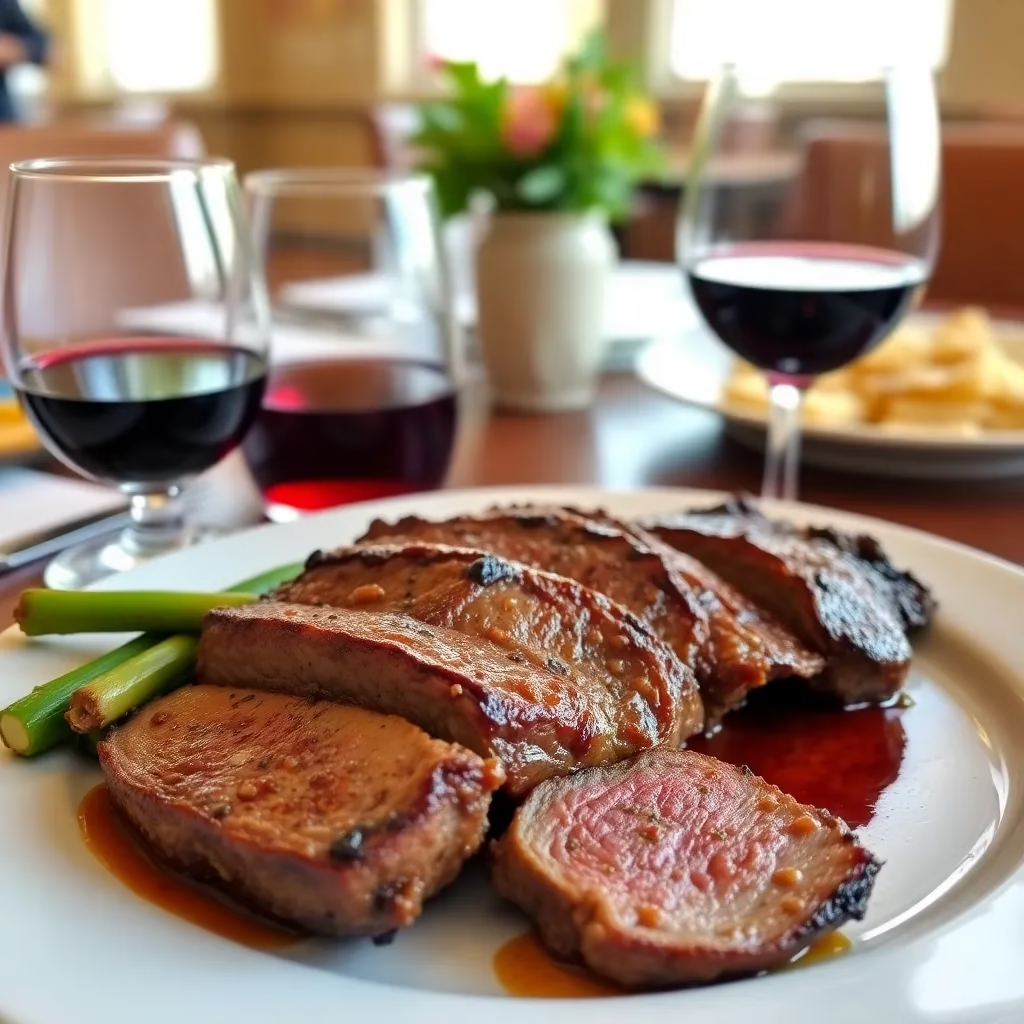Table of Contents
Classic Roast Beef Recipe
A classic beloved, Roast Beef Recipe is simply juicy meat with a rich gravy. You might think it’s intimidating, but the perfect roast is within reach using the right method. To help you get it right every time, this guide will show you how to select the best beef cut for your roast, craft the perfect savoury gravy, and maintain a tender, flavorful, impressive roast each and every time.

Choosing the Right Beef Cut
If you want to successfully roast beef, you’ll know what cut of meat to choose. Different cuts have varying levels of fat, flavor, and tenderness:
- Top Round Roast: Economically lean and flavorful, this cut makes great slow-roasting meat.
- Rump Roast: Particularly suited for long roasting durations, rump roasts are slightly marbled and provide a deeper taste.
- Sirloin Tip Roast: This cut is renowned for its good harmony of flavor and softness.
- Prime Rib: Prime rib is more opulent but still quite delicate as it is so marbled with fat.
Quality Grades and Why They Matter
To have less fat and more juiciness and flavor, go with USDA Prime or Choice beef. It’s marbling, or the fat in the meat that runs through it and melts when cooked, making it extra flavourful and keeping the meat nice and moist. The best results usually come with meat that’s bright red and contains a good amount of marbling. We recommend purchasing meat from a trusted butcher or a good source.
Prepping the Beef for Roasting
Bringing Meat to Room Temperature
Let your roast come to room temperature before cooking. Let the picture sit out of the fridge for 30 – 60 minutes and remove it. This helps the meat cook more evenly through, keeping an exterior that’s not tough and overcooked and an interior that still isn’t cooked through.

Seasoning for Maximum Flavor
Roast beef recipe must be well seasoned. Rub the meat with a good mixture of salt, freshly cracked black pepper, and aromatic herbs (parsley, thyme) that give a wonderful crust to the meat.
Classic Seasoning Rub:
- 3 tablespoons of kosher salt
- 2 tablespoons of freshly cracked black pepper.
- 1 tablespoon of minced garlic
- 1 teaspoon of dried thyme
- 1 teaspoon of dried rosemary
The green rub should be applied to the entire surface of the roast, pressing it into the meat, so that it will stick. To get that deeper flavor you can put the seasoned roast in the refrigerator overnight.
Optional Marinade
Marinate the beef overnight if you like in red wine, soy sauce, garlic, and fresh herbs. The result is an extra dimension as to how flavour should play.
Mastering the Two-Step Roasting Process
High-Heat Searing for Flavor
Perfect roast depends on a tasty crust:
- Set the oven to450°F (230°C).
- Sear the roast: Season beef on a shallow roasting pan by setting on a rack. Spend 15 to 20 minutes at this high temperature baking. This strong heat caramelizes the surface and generates a crispy crust that seals in the liquids.
Slow, Gentle Roasting

First you sear it; then, lower the oven temperature to 325°F/160°C and roast it. Slow-cooked beef stays juiced and soft; it is milder and slower.
Checking for Doneness with a Meat Thermometer
For perfect results, use a meat thermometer:
- Rare: 49–52°C, 120–125°F
- Medium- Rare: 130–135°F (54–57°C)
- Medium: 45–60°C, 135–140°F

Tip: Take the roast off when it is a few degrees below your target temperature; it will keep cooking off.
Resting and Carving the Beef
Why Resting is Crucial
Let the meat rest once you roasted it. At least 15 to 20 minutes should pass after loosely covering it with foil. This lets the juices be redistributed so that each mouthful tastes the same and is wet.
Tips for Carving
For best softness, it should be carved against the grain after sharp cutting knife. Cutting short muscle fibers helps them to shorten them, so chewing the meat is simpler.
Making a Rich Gravy
Collecting Pan Drippings
The roast is taken out of the pan and there will be drippings left. Then the base for a gravy is this.
Deglazing and Thickening
- Deglaze the Pan: Stovetop over medium heat, place the roasting pan. To loosen and get those browned bits to scrape away, add wine, beef broth or water.
- Thickening: Continue using a whisk, stirring all the while, until you have added 1-2 tablespoons of flour or a prepared roux and when smooth. Add more and more broth, slowly and adjust the consistency as you wish.
- Season to Taste: Salt and pepper and herbs, to taste.
Variations on Gravy
- Mushroom Gravy: Separately sauté mushrooms and then add to gravy for additional taste and texture.
- Herb-Infused Gravy: For aromatic depth, you can add fresh rosemary, thyme or sage.
Serving Suggestions
Classic Side Dishes
Pair your roast beef recipe and gravy with these classic sides for a memorable meal:
- Mashed Potatoes: Stools of creamer potatoes stuffed with a thick gravy.
- Roasted Vegetables: Roast green beans, carrots, and Brussels sprouts among other vegetables.
- Yorkshire Pudding: A common accompaniment for pouring it all in.
Beverage Pairings
Search for something sophisticated; complement your roast beef recipe with something rich like red wine, Cabernet Sauvignon, Merlot, or a robust lager.
Creative Uses for Leftover Roast Beef Recipe
Transform your leftovers into delicious meals:
- Beef Sandwiches: Thin slices on crusty toast either mustard or horseradish flavored.
- Beef Stroganoff: Beef Stroganoff calls for egg noodles mixed with sour cream, onions, and mushrooms.
- Hearty Beef Stew: Arrange beef chunks in a broth using potato, carrot, and herb combination.
Tips and Troubleshooting
Avoiding Overcooked Meat
Know when your meat is ready and pull it from the oven when it’s ready.
Seasoning Tips
- For good flavor on your roast, you need to season generously. Don’t hold back!
- Skipping this phase will result in a dry roast.
- Do not skip the resting period. Let it rest; be patient.

Roast Beef Recipe(Conclusion)
Creating a classic roast beef recipe with gravy isn’t as hard as you imagine. If you take the right steps, you’ll have a delicious, tender main course to serve whenever you choose. Give it a try, and don’t just stick to the same ‘thing’ experiment with flavors to make your own. Enjoy every juicy bite!
Roast Beef Recipe(EAQs)
How to Cook Roast Beef Recipe?
Choosing an excellent piece of meat, such top round, rump or sirloin tip, can help you to prepare a roast beef recipe. On the meat, the generously used ingredients are salt, pepper, garlic and herbs. After 15 to 20 minutes of broiling at high heat (450℉ / 230℉), lower the oven temperature to 325℉ (160℉) and roast until your preferred doneness. Let the meat rest for 15 to 20 minutes before carving to get best tenderness.
How Long Should I Cook a Roast Beef Recipe?
It changes depending on your taste in roast cooking and size. Normally:
• Rare: Internal temperature of 120-125°F (49-52°C);
• Medium: To work best, use a meat thermometer and utilize 135-140°F (57-60°C).
How to Store Leftover Roast Beef?
Once the roast is finished, resist it once it cools until it is totally cold; then, tightly wrap it in foil or place it in an airtight container. Store it in the fridge for up to four days or freeze it for a longer life. To reheat, thinly slice then gently warm to retain moistness.
Can I Use Different Cuts of Beef?
Of course, you could use tenderloin, chuck roast, or ribeye roast among other cuts. Depending on the fat content, thickness, and intended cut doneness, adjust the cooking time and method.

